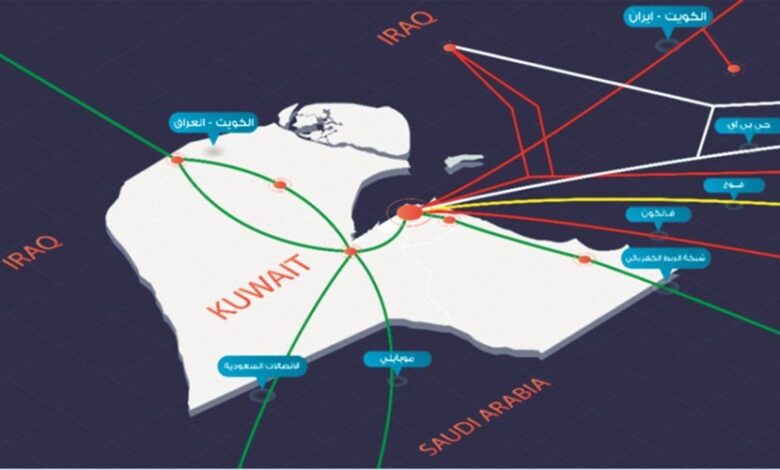Kuwait to install 3 new internet cables to bolster connectivity
Efforts are underway to increase the cables to eight, enhancing both international and local Internet and data transmission.

-
The capacity of the three land cables is about 3,830 gigabits per second, including the total capacity of the Saudi Mobily Etihad cable, which is about 400 gigabits.
-
There are two types of cables connecting Kuwait to the international Internet network: marine cables, through which Kuwait is linked with two cables, and land cables, through which the country is connected to the network with three cables.
Amer Hayat, Head of the Communications Sector at the Communications and Information Technology Regulatory Authority, revealed to Al-Anbaa newspaper that Kuwait is currently connected to the Internet through five international cables. These cables form a system of technical transmission media for Internet and data movement, both internationally and locally. Additionally, efforts are underway to increase the number of cables to eight by landing three new cables in Kuwait.
Hayat pointed out that there are two types of cables connecting Kuwait to the international Internet network: marine cables, through which Kuwait is linked with two cables, and land cables, through which the country is connected to the network with three cables.
He pointed out that in terms of submarine cables, Kuwait is connected to the Internet through the international submarine cable “FALCON,” in addition to the international submarine cable “GBI.”
He stated that the three land cables are connected to operator companies in the Kingdom of Saudi Arabia. These include the cable of the Saudi Etihad Mobily Company, which passes through the Nuwaiseeb port and the Salmi port; the cable of the Saudi Telecom Company STC, which also passes through the Nuwaiseeb port and the Salmi port; and the cable of the Gulf Electricity Interconnection Authority, which goes through the Nuwaiseeb port.
In turn, Eng. Jamal Sadiq, the Director of the International Connections Department at the Communications and Information Technology Regulatory Authority, stated that these cables connect Kuwait to the international network and are not solely used for traffic passing through Kuwaiti lands. This maximizes Kuwait’s benefit from its location, as the increase in the number of cables connected to Kuwait ensures the continuous provision of Internet services with high efficiency.
Sadiq pointed out that according to the latest reports from the Communications and Information Technology Commission, the total capacity of the five cables currently in operation is about 8,580 gigabits per second.
The capacity of the three land cables is about 3,830 gigabits per second, including the total capacity of the Saudi Mobily Etihad cable, which is about 400 gigabits.
The capacity of the STC cable reaches 3,030 gigabits, and the capacity of the Gulf Electricity Interconnection Authority cable reaches 400 gigabits.
The capacity of the two international submarine cables in Kuwait is about 4,750 gigabits, including 2,050 gigabits for the Falcon international submarine cable and 2,700 gigabits for the GBI international submarine cable.













